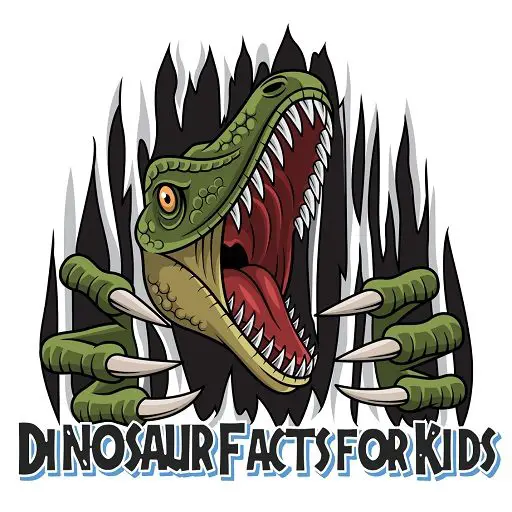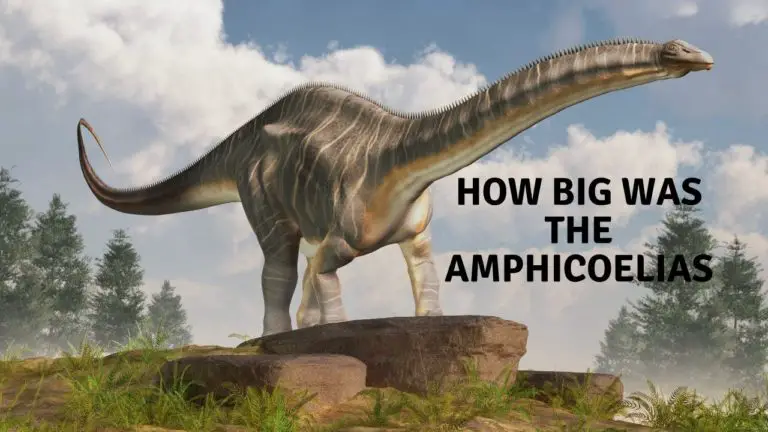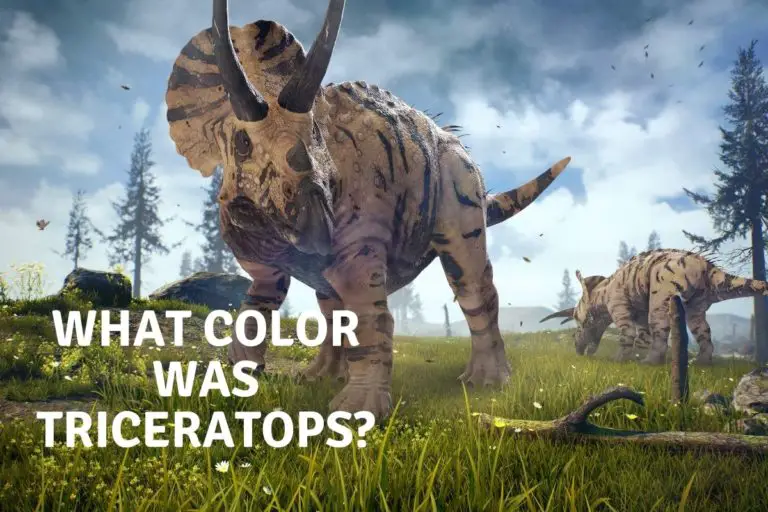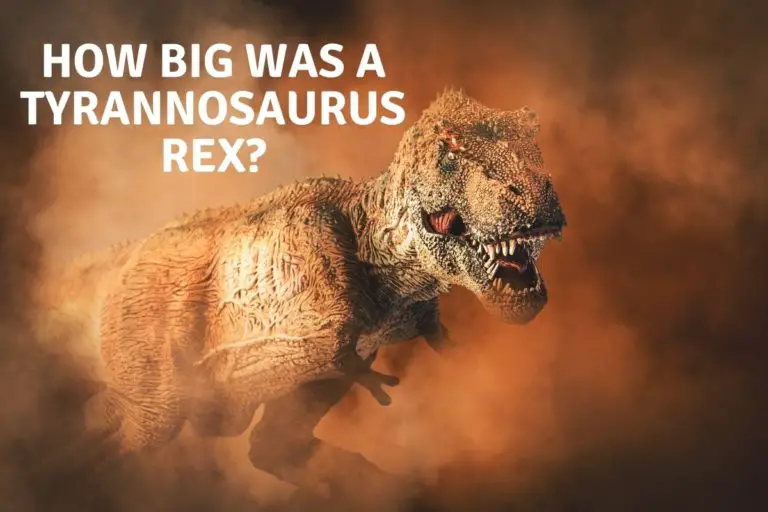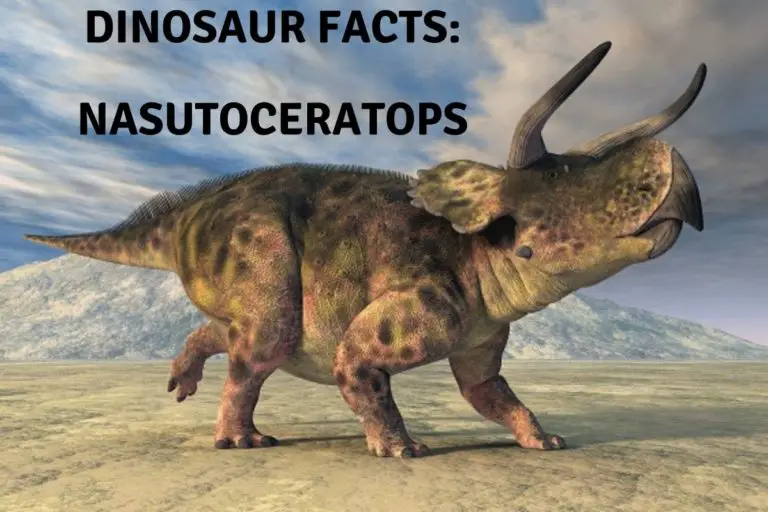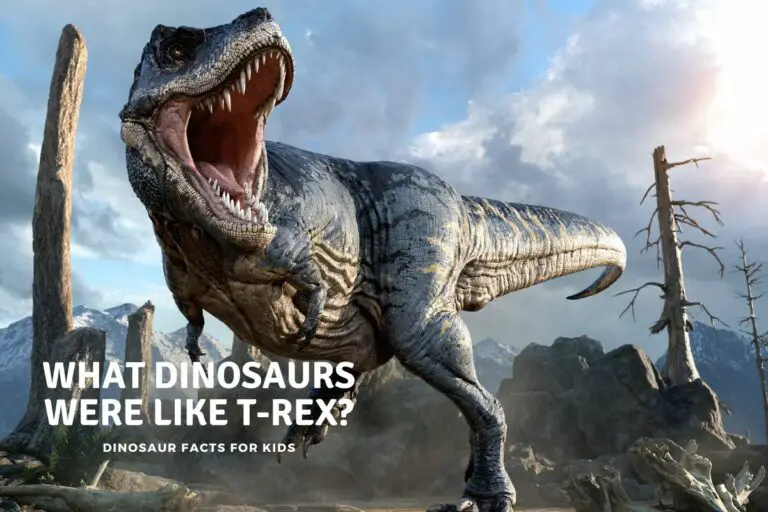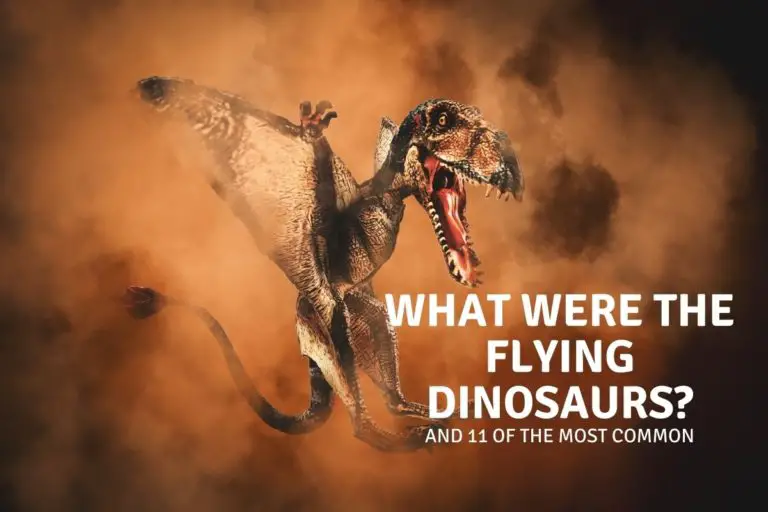All Dinosaurs in Prehistoric Planet 2
What is Prehistoric Planet 2?
Prehistoric Planet 2 is a documentary series that follows prehistoric creatures as they lived on Earth during the late Cretaceous period. Towards the end of the age of the dinosaurs.
The series uses computer-generated imagery (CGI) to recreate extinct creatures, allowing viewers to experience these animals in their natural habitats as if they were there. The second season of Prehistoric Planet includes five episodes, each showcasing different species of dinosaurs and prehistoric animals, new habitats, and scientific discoveries. The series is narrated by Sir David Attenborough,
The show is set to air on Apple TV+ starting on May 22, 2023, and like the first season prehistoric planet 2 will include 5 episodes covering different habitats . We have put this into the table below for both the Prehistoric Planet 1 and Prehistoric Planet 2.
However the titles for Prehistoric Planet 2 episodes are only currently a rumor.
| Prehistoric Planet Episodes | Prehistoric Planet 2 Episodes |
| 1. Coasts | Islands |
| 2. Deserts | Badlands |
| 3. Freshwater | Swamps |
| 4. Ice Worlds | oceans |
| 5. Forests | North America |
With the Success of Prehistoric Planet 1 it is of no surprise that Apple Tv commissioned another set of 5 episodes. The surprise is that in less, almost, than a year they have managed to create , narrate, edit and release this to match last years release.
With the first trailer for Prehistoric planet 2 literally dropping today ( as i write this it’s the 19th of April) we took a look and tried to identify the dinosaurs and other prehistoric animals featured within it. Although the trailer for prehistoric planet is only 1 minute long they manage to shoehorn a lot of dinosaurs into that!
It looks like with the release of the Dinosaur movie 65, the 2 upcoming Megalodon movies, Black Demon and The Meg 2: The Trench it is going to be a good year for prehistoric Media this year!
Why are Documentaries better than movies to see dinosaurs.
Documentaries are often better for seeing dinosaurs than movies because they typically aim to accurately represent what scientists currently know about these extinct creatures.
Documentaries rely on the latest scientific research and evidence, and often consult with paleontologists and other experts in the field to ensure that the depictions of the dinosaurs are as accurate as possible.
Movies often take more creative liberties and while they can be entertaining and visually stunning, they may not always be scientifically accurate. The focus of movies may be on storytelling and special effects rather than education and scientific accuracy.
Also in regard to actual screen time, dinosaur documentaries like prehistoric Planet 1 and 2 are full of dinosaur footage where movies might concentrate more on the human characters than the actual dinosaurs.
if you are looking for cool dinosaur stuff like movies, masks, fossils, books toys, models and so much more we have put in the ground work for you and have collected some of our favorites here for you to browse over.
What Dinosaurs are in Prehistoric Planet 2 Episodes.
They managed, as we mentioned above, to get a lot of dinosaurs into their one minute long trailer for prehistoric planet 2 and we take a look at the ones we think we can identify in the list below. Some may be changed with later trailers, and of course the release of the show,
but we are pretty confident we have identified most of them. Although we struggle a little with the small raptors ( there were so many of them!)
So lets jump in and see what dinosaurs you can expect to see in Prehistoric Planet 2 this coming May. We have tried to do these in the order they appear in the Prehistoric Planet 2 trailer.
What dinosaurs are in Prehistoric Planet Episode 1: Islands
Episode 1 Introduced us to 11 species of animal as it showed us life on islands 66 million years ago these were spilt into the following.
- 6 Dinosaur Species: Zalmoxes, Tethyshadros, Majungasaurus, Masiakasaurus, Imperobator, Morrosaurus
- 1 Mammal: Adalatherium
- 2 Pterosaurs: 1 unnamed and the Hatzegopteryx
- 1 Marine Reptile: An unnamed mosasaur
- 2 Reptiles: the Simosuchus and the Madtsoia
| Animal | Size | Weight | Habitat | Classification |
|---|---|---|---|---|
| Zalmoxes | 2.5 meters (8 feet) | Around 45 kg 91oo lbs) | Europe | Dinosaur |
| Mosasaurus | Up to 18 meters | Up to 15,000 kg | Oceans | Reptile |
| Tethyshadros | 4.5 meters (15 feet) | 3-500 kg (750-1200 lbs) | Europe | Dinosaur |
| Hatzegopteryx | 10-13 metres – 33 – 39 feet wingspan | Around 200 kg (400 lbs) | Europe | Pterosaur |
| Simosuchus | 0.75 1 meter (2 – 3 feet) | 20 (44 lbs) kg | Madagascar | Reptile |
| Majungasaurus | 5.6 – 7 meters (18 to 23 feet) | 750 1,100 kg 1600–2,400 | Madagascar | Dinosaur |
| Adalatherium | 1 meter (2-3 feet) | 2-5 (4-11 lbs) kg | Madagascar | Mammal |
| Masiakasaurus | 1.8 to 2 metres (6-7 feet) | 20 kg (44 lbs) | Madagascar | Dinosaur |
| Madtsoia | 5-10 meters (16-30 feet) | 50 – 150 kg (110 – 340 lbs estimate) | Madagascar | Reptile |
| Imperobator | 3-4+ metres (10-13 feet) | Unknown | Antarctica | Dinosaur |
| Morrosaurus | Around 3 metres (10 feet) | Around 45 kg (100lbs) | Antarctica | Dinosaur |
As the series progresses we have more information below on some of the more featured dinosaurs in the Prehistoric Planet 2 with links for further information as well.
What Dinosaurs are in Prehistoric Planet Episode 2: Badlands
The series moves on from the islands surrounded by water (or ice) to the desert like terrain of the badlands to look at the prehistoric animals and dinosaurs that called these desolate places home. it features 2 sauropods, the return of velociraptor ( or similar) and an Ankylosaur and pachycephalosaur as well.
This episode, apart from a brief look at a pterosaur flying over head were entirely full of dinosaurs.
| Animal | Maximum Size | Weight | Habitat | Classification |
|---|---|---|---|---|
| Tarchia | Around 5 – 6 meters, 18 – 20 feet | Around 2500 kg, 4400 lbs. | Mongolia | Dinosaur |
| Corythoraptor | Around 1.6 meters (5-6 feet) | Around 33-40 kg, 70-90 lbs. | China | Dinosaur |
| Isiasaurus | Around 20 meters tall, 65 feet | 15,000 kg ( 30-40,000 lbs) | Pakistan | Dinosaur |
| Velociraptors | 1.5 -2 Metres (5.5 – 6 feet) | 14 – 20 kg (30 – 45 lbs) | Mongolia | Dinosaur |
| Nemegtosaurus | 13 metres (45 feet) | Speculative | Mongolia | Dinosaur |
| Tarbosaurus | 10-11 metres (35 feet) | 4-5,000 kg (10-11,000 lbs.) | Mongolia | Dinosaur |
| Kuru Kulla | 1.5 to 2 metres 6 feet | 25 kg (40-55 lbs) | Mongolia | Dinosaur |
| Prenocephale | 2.2 metres (7 feet) | 40 kg (88 lbs) | Mongolia | Dinosaur |
| Rajasaurus | 11 metres (36 feet) | 1,100 kg, (2300 lbs) | India | Dinosaur |
What Dinosaurs are in Prehistoric Planet Episode 3: Swamps / marshlands
the Swamps of our Prehistoric Planet held a wide range of life which was demonstrated in this episode, from crocodiles, and Pterosaurs, to fish and dinosaurs.
| Animal | Maximum Size | Weight | Habitat | Classification |
|---|---|---|---|---|
| Pterosaur ( Mongol Giant?) | Maybe 30+ foot Wingspan | Unknown | Mongolia | Pterosaur |
| Shamosuchus | 4 m (13m) in length | Unknown | Mongolia, | Reptile / Crocodile |
| Gar | Wide range (this one about 1 metre – 3feet) | wide range | Argentina | Fish |
| Austroraptor | 16-20 feet. 5-7 metres | 200-600 lbs (90-300 kg) | Argentina | Dinosaur |
| Masiakasaurus | 1.8 to 2 metres (6-7 feet) | 20 kg (44lbs) | Madagascar | Dinosaur |
| Beelzebufo | 1.5 feet (50 cm) | 4 kg (10 lbs) | Madagascar | Amphibian |
| Rapetosaurus | 15 metres (49 ft) in length | 10,000 kg (22,000 lbs.) | Madagascar | Dinosaur |
| Pachycephalosaurus | Around 4.5 meters, (14-15 feet) | Around 370 – 450 kg, 800 – 1000 lbs. | America | Dinosaur |
| Edmontosaurus | 12 metres (39 feet) | 5-6,000 kg (11-13,000 lbs. | America | Dinosaur |
| Triceratops | 8–9 metres (26–30 feet) | 5-9000 kg (11-20,000 lbs.) | America | Dinosaur |
| Tyrannosaurs rex | 13 metres – 42 feet | 7-8000 kg (15 – 19,000 lbs.) | America | Dinosaur |
What Dinosaurs are in Prehistoric Planet Episode 4: Oceans
If the Swamps from prehistoric planet episode 3 held a lot of diverse live then the Oceans for sheer numbers trump them on a massive scale, although there were many less actual dinosaurs in the oceans – none basically, there were plenty of other forms of life.
An dinosaurs still found ways to use the oceans even from the land, although as we see not always successfully.
| Animal | Maximum Size | Weight | Habitat | Classification |
|---|---|---|---|---|
| Mosasaurus | 13-17 metres (43-56 feet) | 55,00 – 10,000 kg (12-22,000 lbs) | Ocean | Marine Reptile |
| Phosphorosaurus | 3 metres (9-10 feet) | Unknown | Ocean (Japan, Belgium) | Marine reptile |
| Lantern fish | 2-30 cm (1 inch to 1 foot) | wide range | Ocean | Fish |
| Hesperornis | 1.8 metres (5.8 feet) long | wide range of estimates (10 to 90kg) more likely lower. | North American oceans / Russia | Bird like dinosaur |
| Xiphactinus | 4-6 metres (14-20 feet | 200-450 kg ( 500 -1000 lbs.) | Oceans | Fish |
| Ammonoidea | WIDE range! few mm to 1.8 metres | huge range | All oceans / Europe | Mollusk |
| Pyroraptor | 2+ metres (6 to 7 feet) | 20 kg ( 44 lbs.) | France / Spain | Dinosaur |
| Tuarangisaurus | 8 metres (26 feet) | 1,000 kg (2200lbs.) | ocean | Marine reptile |
| Baculites | 7 cm to 2 metres (2.8 inches to 6.6 feet | Wide range | ocean | mollusk |
| Diplomoceras | 1.5 metres (5.5 feet) | Wide Range | ocean | Mollusk |
| Nostoceras | Variable | variable | Ocean | Mollusk |
| Morturneria | 5 metres ( 16 feet) | Antarctic ocean | marine Dinosaur |
What Dinosaurs are in Prehistoric Planet Episode 5: North America.
the final Episode takes us to North America at the End of the Cretaceous era, and with that come two of the most popular dinosaurs of all time. T-Rex and Triceratops.
However, as seems to be the case in both Movies and Documentaries, T-Rex rarely get things their own way!
| Animal | Maximum Size | Weight | Habitat | Classification |
|---|---|---|---|---|
| Alamosaurus | 26 – 30 metres (85-98 feet) | 42,000 – 80,000 kg (90,000 -170,000 lbs) | North America | Dinosaur |
| Troodon (unknown) | varied – around 2-3 metres | Varied | North America | Dinosaur |
| Tyrannosaurus rex | Around 13 meters, 40 feet | 8 – 9,000 kg, 17-20,000 lbs | North America | Dinosaur |
| Quetzalcoatlus | 15 feet tall, 33 feet wingspan | 250 kg ( 500lbs) | North America | Pterosaur |
| Globidens | 5 metres (16ft) | Unknown | North American Seas | Mosasaur / Marine reptile |
| Sphenodiscus | WIDE range! few mm to 1.8 metres | huge range | North American Seas | Ammonite /Mollusk |
| Styginetta / Presbyornithidae | Unknown as of yet | North America | Bird / Dinosaur | |
| Pectinodon | 2.4 metres / 7 feet long | 40-50 kg / 100-110 lbs. | North America | Troodon / Dinosaur |
| Tricertatops | 8–9 metres (26–30 feet) | 5-9000 kg (11-20,000 lbs.) | North America | Dinosaur |
| Ornithomimus | 3-4 metres (10-14 feet) | 170 kg (370 lbs) | North America | Dinosaur |
| Nanuqsaurus | 5-9 metres (16 – 30 feet ) | 5-900 kg ( 1100 – 2000 kg) | North America | Dinosaur |
Featured Animals in Prehistoric Planet 2
Hatzegopteryx
Hatzegopteryx was a large pterosaur that lived during the Late Cretaceous period, around 70 to 66 million years ago, in what is now Romania. It had a wingspan of up to 36 feet, making it one of the largest pterosaurs known – more than a challenge for Quetzalcoatlus.
Like other pterosaurs, Hatzegopteryx was likely a carnivore and may have preyed on small animals like lizards and mammals. Its remains were discovered in the Hateg Basin of Romania, which was once an isolated island ecosystem in the Late Cretaceous.
In Prehistoric Planet 2, Hatzegopteryx is shown as charming, or trying to , a mate on a beach with mating rituals and calls.
Isiasaurus
Isiasaurus was a large sauropod dinosaur that lived during the Late Cretaceous period, around 70 to 66 million years ago, in what is now India. Which was a fairly volcanic island at the time.
It was a type of titanosaur, which were characterized by their long necks and tails, and relatively small heads. Isiasaurus was one of the largest sauropods known, measuring up to 65 feet in length and weighing up to 20 tons.
In Prehistoric Planet 2, Isiasaurus is shown as walking through a volcanic landscape, it has to be said with not the sense of urgency we would have there! to find a place to lay its eggs.
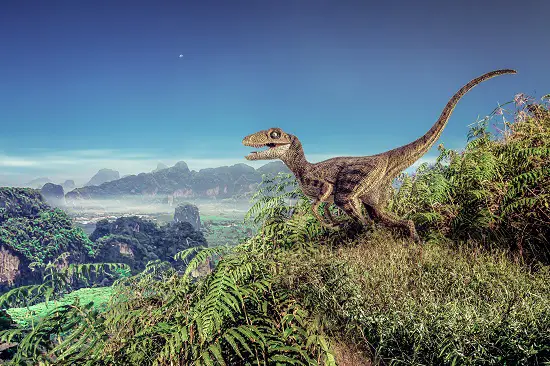
Velociraptor
Velociraptor is one of the most famous and iconic dinosaurs, known for its small size, sharp claws, and deadly hunting abilities. It lived during the Late Cretaceous period, about 75-71 million years ago, in what is now Mongolia and China. Velociraptor was a member of the Dromaeosauridae family, which were known for their sharp, curved claws and bird-like appearance.
In Prehistoric Planet, Velociraptor is shown as an agile and intelligent predator that hunted in packs, In Prehistoric Planet 2, if it is indeed a velociraptor ( we are unsure) it is shown jumping for prey ( and possibly as a very young hatchling -though we have a feeling that may be more troodon than raptor) and successfully taking down a Prenocephale as well.
Hesperornis
Hesperornis was a flightless aquatic bird that lived during the Late Cretaceous period, around 70-66 million years ago, in what is now North America. It was a large bird, measuring up to six feet in length and weighing around 100 pounds.
Hesperornis had a streamlined body with powerful legs and wings that had evolved into flippers, allowing it to swim efficiently in the ocean. It had a sharp beak lined with teeth, which it likely used to catch fish and other marine animals.
In Prehistoric Planet 2, Hesperornis is shown diving deep into the ocean to catch its prey and coming face to face with a 20 foot toothy fish!
Pectinodon
Pectinodon was a small dinosaur that lived during the Late Cretaceous period, around 67 to 66 million years ago, in what is now North America. It was a troodontid dinosaur. and is currently only known from its teeth.
If it is this Troodontid dinosaur it is shown possibly scooping up flies on a beach in the prehistoric planet 2 trailer and in the show hunting prehistoric birds in a newly formed lake.
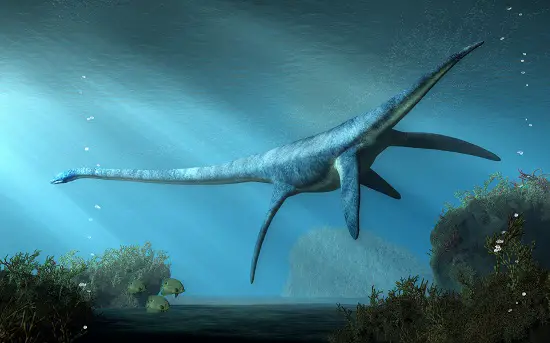
Plesiosaurs
Plesiosaurs were not dinosaurs, but they were marine reptiles. They are often described as resembling a giant shell less sea turtle with a long neck and four flippers, and they were very successful in adapting to life in the water.
Plesiosaurs were predators and would feed on fish, squid, and other marine animals. They were excellent swimmers, and their long necks helped them to reach and catch their prey more easily.
Prehistoric Planet 2 shows a group swimming together though we can not identify the species as of yet, it turn out it was two species of Elasmosaurus – the Tuarangisaurus and the Morturneria
Nanuqsaurus
Nanuqsaurus was a small tyrannosaurid dinosaur that lived during the Late Cretaceous period, around 70 million years ago, in what is now Alaska. It was a close relative of the more famous Tyrannosaurus rex, but much smaller, with more feathers, and measuring only around 20 feet in length and weighing up to 1,000 pounds.
Nanuqsaurus lfed on smaller animals like mammals and reptiles, using its sharp teeth and powerful jaws to tear through flesh.
In Prehistoric Planet 2, Nanuqsaurus is hunting for prey, possibly ornithomimus (see below) in a harsh and unforgiving environment, to provide food for its Young.
Ornithomimus
Ornithomimus was a theropod dinosaur that lived during the Late Cretaceous period, around 70-66 million years ago, in what is now North America. It was a fast and agile dinosaur, with a slender, bird-like body and long, powerful legs.
Ornithomimus had a toothless beak and is believed to have been an omnivore, feeding on a variety of plant and animal materials.
In Prehistoric Planet 2, Ornithomimus shown running from Nanuqsaurus (see above) in a snowy landscape.
Quetzalcoatlus / Hatzegopteryx
As we covered Hatzegopteryx above will will take a chance that the next huge pterosaur was Quetzalcoatlus as it lived in the same area as T-Rex which the clip also shows.
Quetzalcoatlus had a wingspan of up to 33 feet, it was one of the largest flying animals to ever exist. Quetzalcoatlus had a long, thin beak and a relatively short tail, and it likely fed on small animals like lizards, insects, and possibly even baby dinosaurs.
Its name comes from the Aztec god Quetzalcoatl, and it is known from fossil remains found in Texas, USA.
In Prehistoric Planet 2, if it is this pterosaur, Quetzalcoatlus is shown facing off against a hungry T-Rex over a sauropod corpse and (hmmmmm) winning!
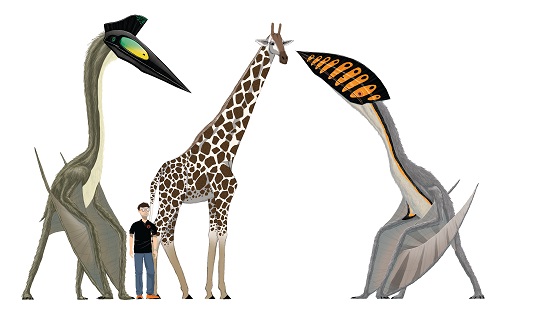
Tyrannosaurus rex,
Tyrannosaurus rex, also known as T. rex, is one of the most famous dinosaurs that ever lived. It was a large, carnivorous dinosaur that lived during the late Cretaceous period, about 68 to 66 million years ago.
T. rex is known for its massive skull, powerful jaws, and sharp, serrated teeth, which allowed it to hunt and eat other dinosaurs, including Triceratops and Edmontosaurus.
Prehistoric Planet 2, in the trailer at least, only has a brief glimpse of T-Rex facing off against a large pterosaur, we imagine it will appear much more frequently in the show though! and it does with a hunt at night of Edmontosaurus.
Beelzebufo
Beelzebufo was a giant frog that lived during the Late Cretaceous period, around 70 million years ago, in what is now Madagascar. It was one of the largest frogs known, measuring up to 16 inches long and weighing over 10 pounds. Its name, which means “devil frog,” refers to its large size and potentially predatory lifestyle.
Beelzebufo likely fed on smaller animals like insects and other frogs.
In Prehistoric Planet 2, Beelzebufo is shown scaring off a medium sized Sauropod, as it defends its mating Puddle! a Rapetosaurus due to the location and time scales of these two animals.
Rapetosaurus
Rapetosaurus was a herbivorous dinosaur that lived during the Late Cretaceous period, around 70-66 million years ago, in what is now Madagascar. It was a titanosaur, a group of sauropod dinosaurs known for their long necks and tails.
Rapetosaurus was a relatively small titanosaurs, measuring about 40-50 feet in length and weighing around 15-20 tons.
In Prehistoric Planet, Rapetosaurus is shown as being startled by Beelzebufo the giant frog/toad while it tries to take a mud bath.
Other dinosaurs we expect in prehistoric Planet 2
The following are dinosaurs or prehistoric animals that we have heard will be making an appearance in Prehistoric planet 2. As it is set in the Late Cretaceous 75-66 or so million years ago these dinosaurs all have that it common.
We do expect if this series is as successful as the original Prehistoric planet that there will be more series that explore earlier time periods as well.
Pachycephalosaurus
Pachycephalosaurus was a herbivorous dinosaur that lived in the Late Cretaceous period, around 70-65 million years ago, in what is now North America. It was a small, bipedal dinosaur that measured up to 4.5 meters in length and weighed around 450 kg. Pachycephalosaurus is known for its thick skull, which was up to 25 cm thick in some areas,
Alamosaurus
Alamosaurus was a massive long-necked sauropod dinosaur that lived during the Late Cretaceous period, around 70-66 million years ago, in what is now North America.
It was one of the last surviving sauropods and is believed to have been one of the largest, measuring up to 69 feet in length and weighing as much as 70 tons. Alamosaurus had a long neck and tail and was able to browse on the highest branches of trees.
In Prehistoric Planet 2, Alamosaurus may be shown as the dinosaur body that a T-Rex and a Quetzalcoatlus were fighting over, as It was also likely preyed upon by large predators like Tyrannosaurus rex.
Tarchia
Tarchia was a type of Ankylosaurid dinosaur that lived in the Late Cretaceous period, about 75-70 million years ago, in what is now Mongolia. It was a relatively large dinosaur, measuring up to 5 meters in length and weighing up to 2,500 kg.
Tarchia was heavily armored, with bony plates covering its body, and a thick clubbed tail for defense.
Rajasaurus,
Rajasaurus, also known as the “princely lizard”, was a theropod dinosaur that lived in what is now India during the Late Cretaceous period, about 70-66 million years ago. It was a medium-sized dinosaur, measuring up to 9 meters in length and weighing around 1,500 kg.
Rajasaurus was a member of the Abelisauridae family, which were known for their unusual skull shapes and relatively short arms.
The Rajasaurus is predicted to be in Prehistoric Planet 2 as there are rumors it was cut from prehistoric planet 1 and presumably this means the footage was already available.
Conclusion
Prehistoric Planet 2 comes to Apple Tv on May 22nd and we will update then and of course before if we find any more dinosaurs that will be featured it this iconic show!
References
- https://collider.com/prehistoric-planet-season-2-trailer/
- https://deadline.com/2023/03/prehistoric-planet-renewed-season-2-apple-tv-1235276422/
- https://www.radiotimes.com/tv/documentaries/prehistoric-planet-season-2-first-look-newsupdate/
- https://www.comingsoon.net/tv/news/1271434-prehistoric-planet-season-2-apple-tv
Hi, I am Roy Ford a General Studies and English Teacher who has taught all over the world. What started as a fossil collection became a great way to teach, motivate and inspire students of all ages and all over the world about dinosaurs and from that and children’s love of dinosaurs came the site dinosaur facts for kids, a resource for all ages.
